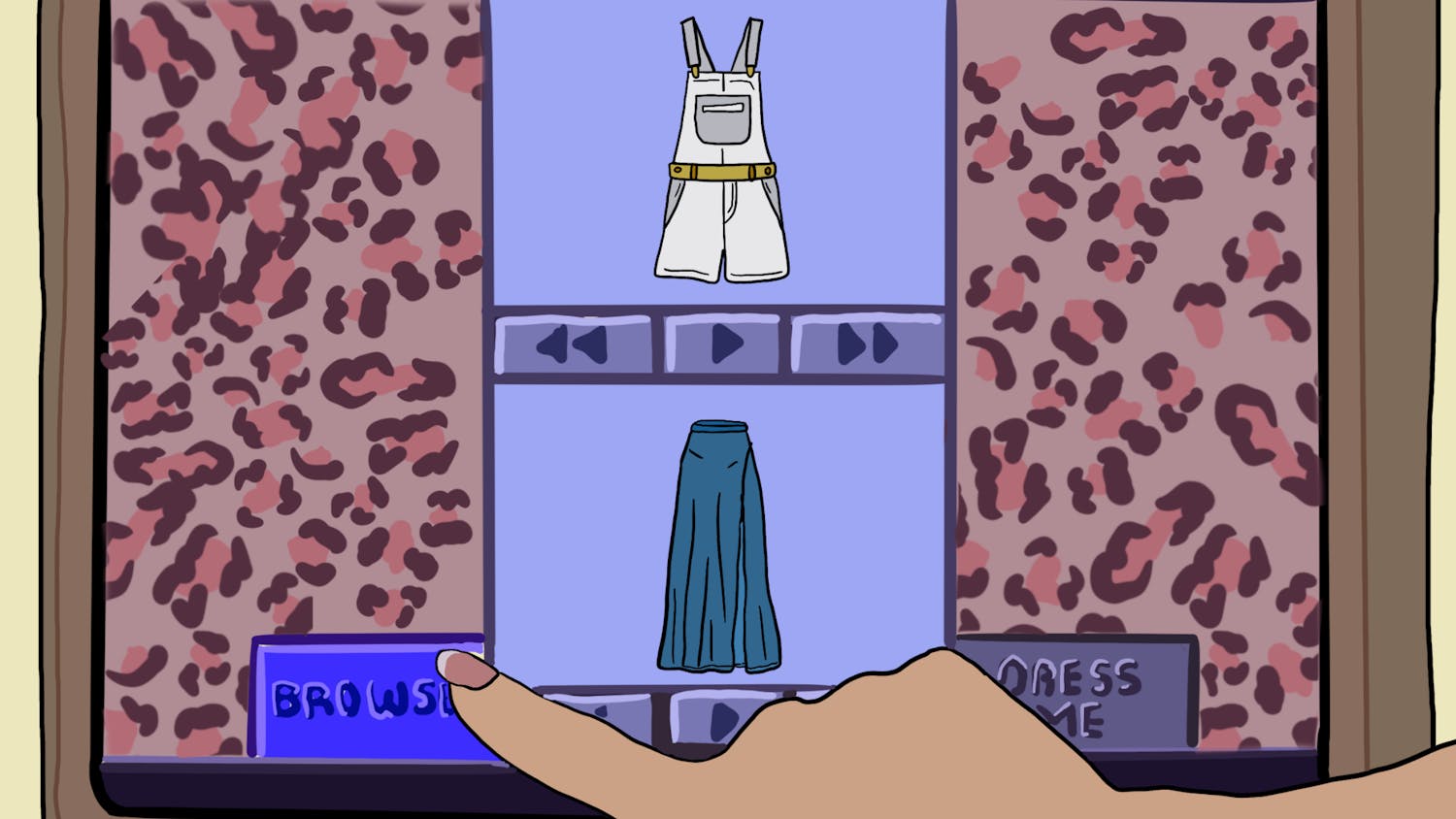When Karly Siegel goes shopping for clothes, she doesn’t confine herself to the women’s section. Whether she’s looking for denim jackets or baggy t-shirts, she’s not afraid to check out what the men’s side of the store has to offer.
“I treat clothing and accessories as a painter treats their paintbrush. I love styling outfits and expressing myself through clothing,” Siegel, the president of the Ohio University Fashion Associates said in an email.
Androgynous clothing has a combination of male and female characteristics, with no definite gender, according to Wall Street International. That means clothing with no gender labels — or unisex clothing.
Artists like Jaden Smith and Lady Gaga are often seen defying gender norms, by wearing skirts or pants suits, respectively. Many popular musicians and models such as Rihanna, Kendall Jenner and Selena Gomez are making fashion statements by wearing track suits and designer sweatpants. In the past, women wearing athletic clothes out have been framed as “bummy” or “lazy,” but now, the public accepts it as a statement, Siegel said in an email.

Rednour, a freshman studying screenwriting and producing, has always been into fashion, but says he did not truly develop his only personal style, until his junior year of high school. The word “fashion” itself is genderless, it is society who links it with gender labels, Rednour said.
Siegel, a junior studying retail merchandising and fashion product development said genderless fashion is not something new — it all started with Coco Chanel creating the first women’s pant suit, she said.
Chanel started creating clothing around 1913, which is also when the women’s suffrage movement began to pick up. Although Chanel did not call herself a feminist, she opened many doors in this time period, according to TIME Magazine.
“Every woman, please thank Coco Chanel for getting rid of those horrible corsets and designing comfy clothing for women,” Siegel, said in an email.
Up until the late 1960s, androgynous fashion had solely been focused on breaking down the stereotypes placed on women and their clothing, according to Bustle.
“Think about David Bowie wearing makeup and how that was something that really made him unique in the pop culture world,” Siegel said. “Now, we have men posing as makeup models and ambassadors.”
In the 1970s, men’s fashion became very flamboyant and then settled down for a while. Now, people are beginning to reside outside of the gender norms, Rednour, who buys women’s clothes sometimes, said.
Rednour has been ridiculed and praised for his style before, but he said he does not care — his goal is to find something no one else would think to purchase, and try to “rock it,” he said.
A conflict often faced by those who wear clothing of their opposite gender is the stigma that comes with it. “Boyfriend jeans” which are often meant to look like men’s jeans because they are baggy, are normalized, while it would be criticized if the same principle were put onto men, Rednor said.
“I think (fashion) is going to keep growing and progressing … is going to take time, but I think eventually there will be stores that are completely unisex.”






